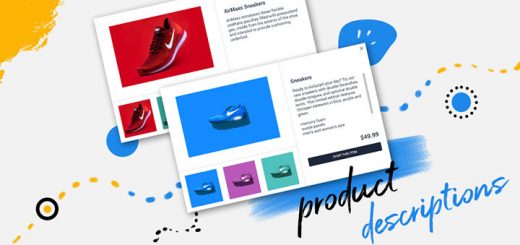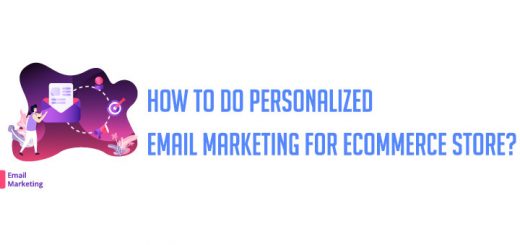Mastering Omnichannel Marketing: 5 Tips for a Successful Strategy
In the age of digital disruption and a rapidly changing customer landscape, mastering omnichannel marketing is essential for businesses looking to stay competitive and succeed in the long-term. It’s no longer enough to just have a presence in the digital world, businesses must create an integrated, seamless experience for customers across all channels. In this blog post, we’ll discuss five tips for creating a successful omnichannel marketing strategy. These tips will make sure your business remains relevant and attractive to customers in this ever-evolving digital landscape. Read on to find out how you can use omnichannel marketing to boost your business’s success.

What is omnichannel marketing?
Omnichannel marketing refers to the practice of integrating multiple marketing channels, such as email, advertising, and social media, into one cohesive strategy. In the past, it was common for businesses to develop their own marketing strategies, each channel used separately. Today, omnichannel marketing is growing in popularity because it provides more effective results.
For example, let’s say you were sending out an email newsletter to subscribers. You would have a separate email list for followers on Facebook and a separate email list for subscribers on Pinterest. By using multi-channel marketing, you can combine these lists into one, which can help you reach a wider audience and increase sales.
What are the benefits of implementing omnichannel marketing into your business strategy?

Omnichannel marketing has become an important part of a company’s business strategy.
- First, omnichannel marketing increases customer engagement with your brand. Customers are interacting with brands in different ways today than in the past. They prefer messaging platforms over phone calls, and they use multiple channels (e.g., email, text, social media, etc.) to communicate with brands.
- Second, omnichannel marketing helps enhance customer satisfaction when shopping or using your services. Customers want to interact with brands on their own terms. A customer who is browsing your website on their desktop might find the store locator section via your mobile website helpful, but if they use an app, they might get frustrated when they can’t access that section. However and whenever they want, brands can respond by providing them with consistent messaging across different channels.
- Third, omnichannel marketing allows your customers to be able to communicate with your brands in the way that is most convenient for them. A person may likely communicate with a brand via email, but if the person prefers communicating via text message, they should be able to do so.
5 hack tips for perfect omnichannel marketing strategy
Many brands are already engaging in omnichannel marketing efforts, but there are still a number of businesses that have yet to leverage this strategy. Here are a few tips that will help you adopt an omnichannel marketing strategy:

Tip 1: Analyzing your website analytics
This analysis will help you understand which channels are most effective in reaching your target audience. For instance, if you notice that most of your traffic is coming from Facebook, it might be worthwhile to invest in Facebook ads to reach more potential customers. Once you’ve identified the most effective channels, focus your marketing efforts on those channels to maximize your reach.
Tip 2: Segmenting your audience into groups
This means you can create personalized messages that cater to each group of your customers. Personalization can take many forms, such as sending emails with targeted messaging based on the pages they have visited on your website or sending them social media ads that align with their interests. This segmentation allows you to create more targeted campaigns that will be more effective at capturing your audience’s attention.
Tip 3: Optimizing content for both website and social media
When creating content, focus on making it clear, compelling, and consistent across all channels. Use images, videos, and other engaging content to tell your brand’s story in a way that resonates with your target audience. Your content should be consistent with your brand’s messaging and values, while also capturing your audience’s attention and driving them to take action.

Tip 4: Developing social media
Social media is an essential channel for any omnichannel marketing strategy. With so many people spending time on social media platforms, you can reach a vast audience with targeted messaging. You can use social media to create brand awareness, generate leads, and drive conversions. Make sure to have a consistent presence on social media and engage with your followers regularly.
Tip 5: Using direct email to drive more sales
Direct mail can be an effective way to reach potential customers who mightn’t be aware of your brand or haven’t visited your website. You can use direct mail to send coupons or business cards to people in your target audience. Include a QR code on these mailers that links to your website to encourage them to visit and learn more about your brand. Direct mail can also be a great way to follow up with customers who have made a purchase or visited your website to encourage repeat purchases.
Bottom Line
Creating an omnichannel marketing strategy requires careful planning and careful consideration. It requires a long-term vision and buy-in from all levels of the organization. It also takes resources and time to develop and implement. However, customers expect the same type of experience across every channel – and that expectation will only continue to increase over time. From customer service to marketing and reaching new customers, an effective omnichannel marketing strategy is key for business success. Now, it’s your turn. Have you created an omnichannel marketing strategy for your business? Has it been successful? Feel free to share with us right in the below comment box!








